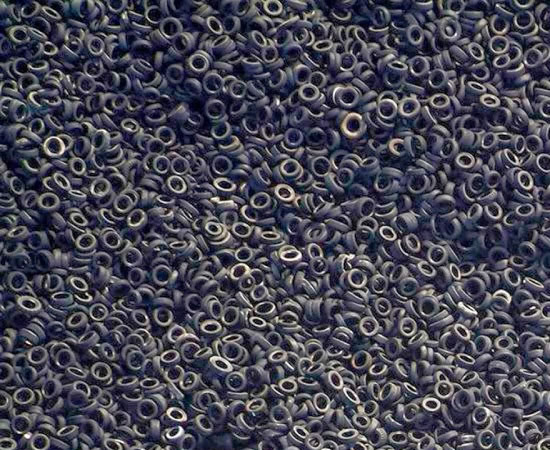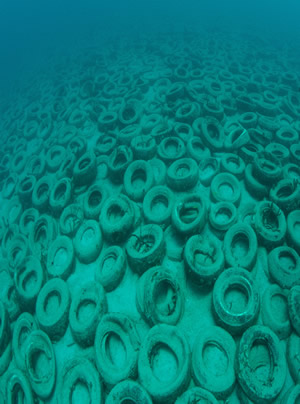Suez Resource Recovery Farce

The Suez (formerly known as Sita) Lucas Heights Resource Recovery Centre is one of the largest landfill sites in the Sydney Basin. The facility is approximately 165 hectares and opened in 1987 with plans to increase the landfill by 8.3 million cubic metres and extend operations at the site until 2037.
According to the Suez website Community & Education section[1] they advise: “For many years we have known that disposing of waste to landfill will not be sustainable in the long-term and, as a society, we must be looking at ways to better manage how we deal with waste.
As part of the global community our ultimate aim should be to minimise waste to landfill by preventing the creation of waste and recovering reusable resources by recycling waste into a usable commodity.
Improving recycling in Australia will not only reduce our carbon footprint, but reduce the dependence we have on non renewable resources.”
The Suez Lucas Heights Resource Recovery Centre receives over 157,000 cars and trucks each year.
After a wedding reception held on a private property I was tasked with a tip run and headed off to Lucas Heights to the Resource Recovery Centre. I had a covered 8×4 trailer load of mainly glass bottles, separated into colours, and flattened cardboard boxes.
I pulled onto the weighbridge and stopped at the window where the attendant asked what I was dumping. I stated that "It’s about 80% sorted glass bottles and the rest is cardboard boxes". The attendant advised to "Put the cardboard in the paper recycling bin and take the rest to the Waste Collection Point". The Waste Collection Point is a gathering of bins available for items that are not reused or recycled. The waste in these bins is then taken around to the landfill hole for disposal. I responded with "Maybe you misheard me but 80% is sorted glass bottles". The attendant then said "We don’t recycle glass here, it just goes in the ground."
I was stunned by that statement and when I recovered I said "But you are a resource recovery centre?" to which the attendant replied "We don’t recycle glass here as we have to pay for trucks to take it away."
So approximately three cubic metres of perfectly recyclable glass bottles are now taking up space underground. No wonder they have plans to increase the landfill by 8.3 million cubic metres!
At a dinner party recently this subject was mentioned and one of the guests stated that they had also been told to put the glass in the Waste Collection Point for landfill.
On deciding to investigate this apparent Resource Recovery Farce further I went to the Suez Lucas Heights web page[2] to see what they said about their resource and recovery efforts. Under the heading “Resource Recovery Centre” I found the following information:
The Resource Recovery Centre and Waste Collection point is an area for small vehicles to drop off recyclable materials.
- Recyclables; eg. plastic containers, paper, cardboard, cans
- Scrap metal; eg. washing machines, stoves, bicycles
- Hazardous items; eg. paint, vehicle batteries, engine oil, gas cylinders
- Milk crates
- Old clothing
- Household rubble; eg. bricks, concrete, roof files and terracotta pies (which are all processed for reuse on site)
No mention of glass containers at all.
This information confirms what the attendant had said so I decided to go direct to Suez to obtain some clarification on how glass containers are treated at their facility. After many transfers around various departments I was finally put through to Shay Menyweather – Communications Coordinator SUEZ Australia & New Zealand. Shay listened to the details of my enquiry, took my email address and said he would get back to me as soon as possible. Soon after my call Shay sent through an email requesting a list of my questions that he would put to the "Lucas Heights Team" that afternoon.
I put the following questions to Shay Menyweather:
- Why do you not recycle glass at that facility?
- Is the response by the attendant of “We don’t recycle glass as we have to pay for trucks to take it away.†correct?
- If this is the case; do you not have to pay to transport other recyclables to the various recyclers, such as steel mills?
- Are there plans to start accepting glass for recycling and, if so, when will they come into effect?
After nine days and two emails apologising for the delay in getting back to me, a response via email came through from Shay with a further apology for the extended delay followed by a quote in response to my questions for for this post:
"We do not currently accept glass bottles for recycling at our Lucas Heights facility. The closest drop off point for glass recycling is the Reverse Garbage Co-Operative LTD." – Luke Schepen, Corporate Affairs Manager, SUEZ.
After all that time this underwhelming quote completely ignored the questions posed. The problem with the quote is that Luke Schepen is not just out of touch with the environmental need to recycle glass containers brought in by residents, instead of putting them into the ground, but he is attempting to pass the responsibility onto "the Reverse Garbage Co-Operative LTD."[3] which is 40 kilometres, about an hours drive North East according to Google Maps, away from the Lucas Heights facility but more importantly DOES NOT ACCEPT GLASS CONTAINERS FOR RECYCLING!
So please do not take your glass containers there as it will only be a massive waste of your time. They do however provide an excellent "Reverse Garbage" service where suitable resource items including reusable off-cuts, over-runs, art & craft materials, stage props, knick-knacks, furniture and other items are made available to the general public for creative use or ‘reuse’. By using these resources to create new items or to give items a new purpose it ultimately prolongs the life of the resource.
The following are quotes from residents of the Shire and outside the Shire but close enough to it to use the Lucas Heights facility.
- "This would have to be the most ridiculous situation I have come across. I think the council or the EPA should instruct Suez that they must take glass containers for recycling and to not dump them in the ground." – A.Maltby, Miranda
- "How can Suez be so irresponsible? What is the point of a resource recovery centre if it doesn’t recover a resource such as glass?" – D.Preston, Sutherland
- "Quite simply unacceptable! Luke Schepen needs to drag himself into the 21st century. How can he hold his position at Suez?" – D.Pinson, Cronulla
- "I took a load of beer bottles to the tip at Lucas Heights and was told to put them in the Waste Collection Point. What a waste of a reusable resource!" – R.Nils, Liverpool
Yesterday, I had a conversation about this subject with Jamie Lepre. Jamie is a Co-founder of Environment-To-Be[3] which is an eco-minded social organisation that seeks to improve mental, physical and spiritual environments. The conversation can be summed up with the following quote from Jamie:
"Recently, Environment-To-Be started our own local clean up events and to say glass bottles are among one of the most commonly retrieved items in the bush would be an understatement.
It seems like an utter waste to spend such time and effort pulling trash out of the local environment to find that any recyclable glass found will simply be crushed into the landfill without a second thought at the Suez Resource Recovery Centre in Lucas Heights.
The use of recycled glass containers is endless and if we are to move to a plastic free environment, we need to know that it’s replacement will have more longevity in the consumer cycle than it’s predecessor.
Luke Schepen, of SUEZ, needs to act without delay to remedy the situation of the Lucas Heights facility sending glass containers to landfill instead of recycling them."
Sutherland Shire Council was contacted on the 7th June, 2017 regarding this farce and their response, after two weeks, is quite apathetic when it comes to putting glass containers into landfill. Their statement reads “As the SUEZ facility at Lucas Heights is operated by a private company, we are unable to comment on their glass recycling services.” But they do “…encourage our residents to use the (yellow lidded) bin for the recycling of glass bottles and jars so that the glass reaches the correct facility for sorting and then onto other manufacturers for recycling.”
If you feel that Sutherland Shire Council should take a more proactive stance on this matter then drop them an email at wasteinfo@ssc.nsw.gov.au and let them know.
The NSW EPA[5] was contacted with regards to the licensing of the facility and whether the licence allows the facility to not recycle glass. The reply came from Katie Ritchie, Senior Public Affairs Officer – Public Affairs, and states “The Environment Protection Licence issued by the NSW Environment Protection Authority (EPA) for the SUEZ Lucas Heights Resource Recovery Centre permits the operator to accept glass for recycling or disposal in the landfill. There is a financial disincentive to dispose of waste material that can be recycled, as the waste levy will be payable on all waste materials disposed of at the landfill.”
So the SUEZ Lucas Heights Resource Recovery Centre is not only wasting a valuable resource by dumping recyclable glass into landfill they are actually wasting money by paying the waste levy to do so!
If you would like to let Suez know that their policy of dumping glass containers, brought in by residents, into landfill is totally unacceptable then please call them on 13 13 35 and ask to speak to Shay Menyweather or contact Shay via his email address shay.menyweather@suez.com
[1] Suez Website Community & Education section – http://www.sita.com.au/community-education/site-tours-education/recycling-tips/
[2] Lucas Heights Resource Recovery Centre Web page – https://www.sita.com.au/facilities/map-of-australia/lucas-heights/
[3] Reverse Garbage – https://reversegarbage.org.au/
[4] Environment–To–Be – https://www.facebook.com/pg/Environmenttobe
[5] The NSW Environment Protection Authority (EPA) – https://www.epa.nsw.gov.au/


